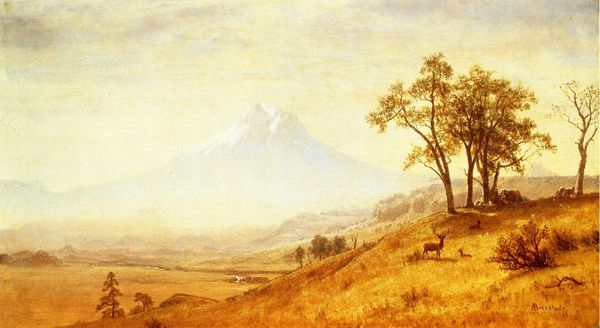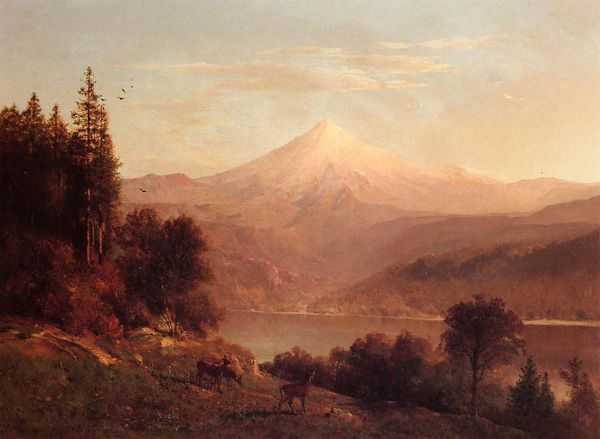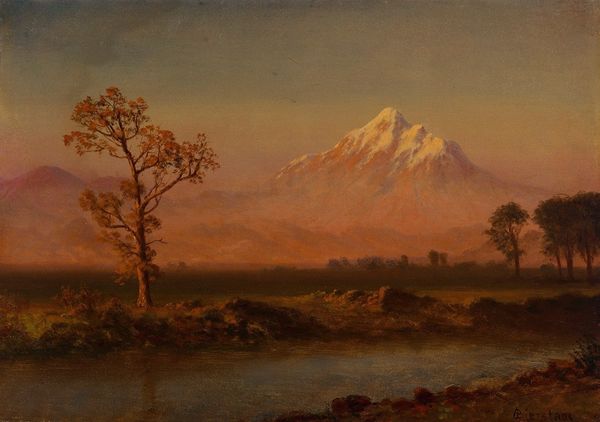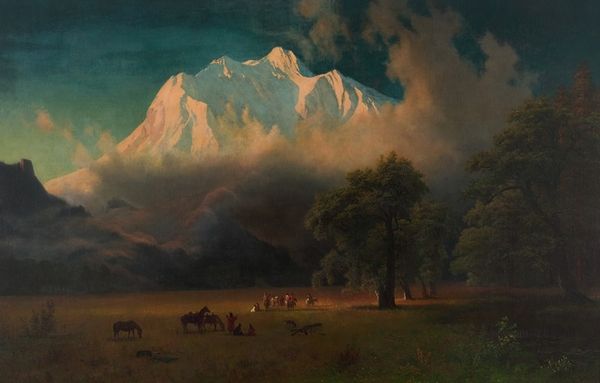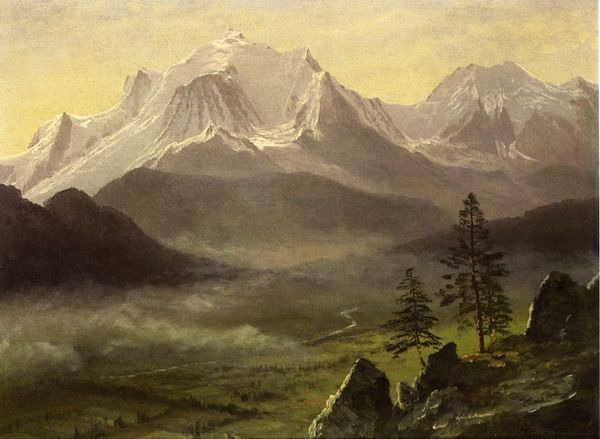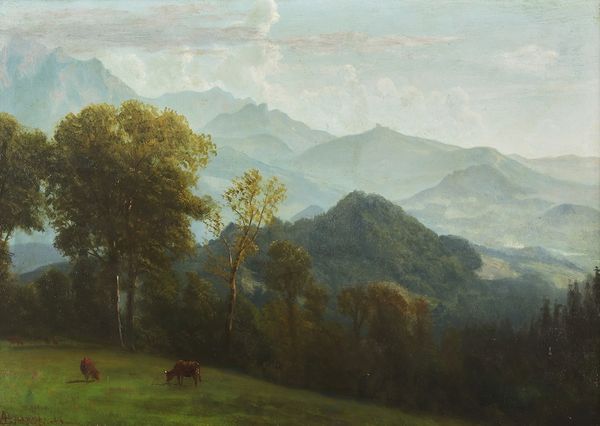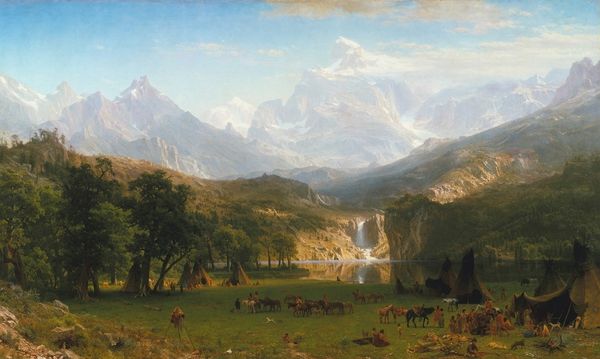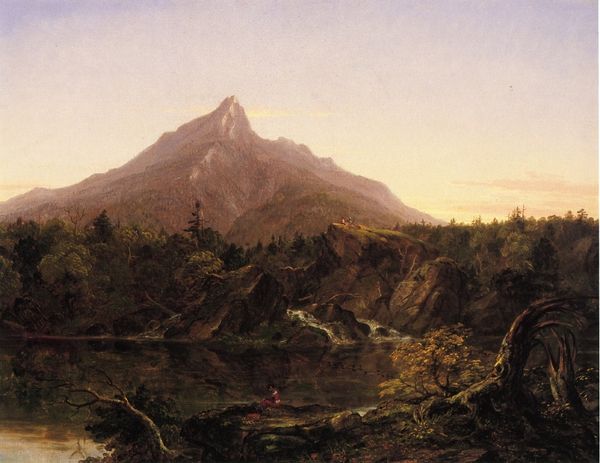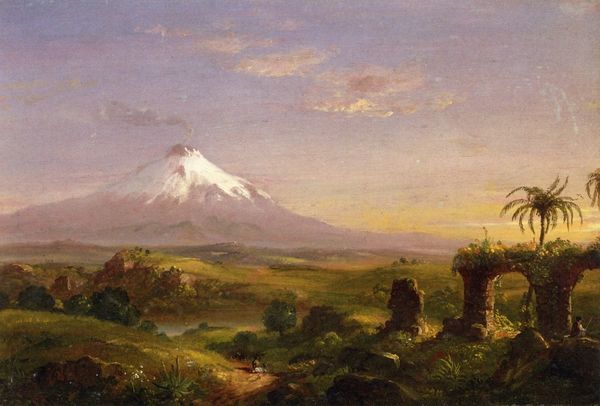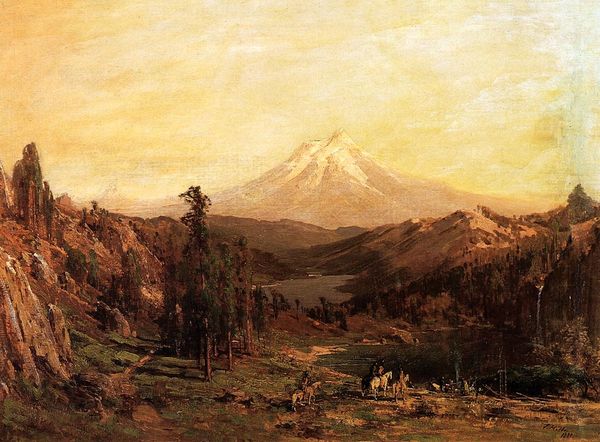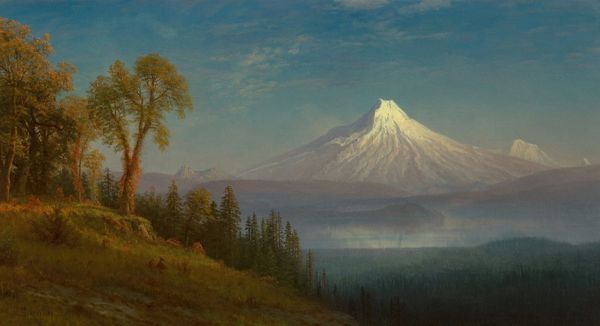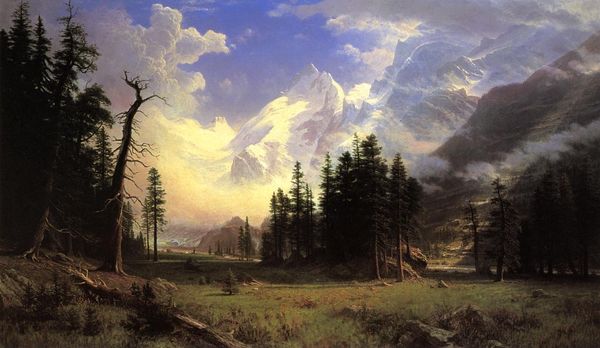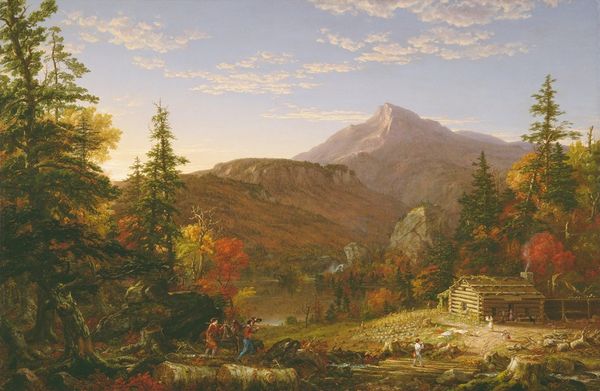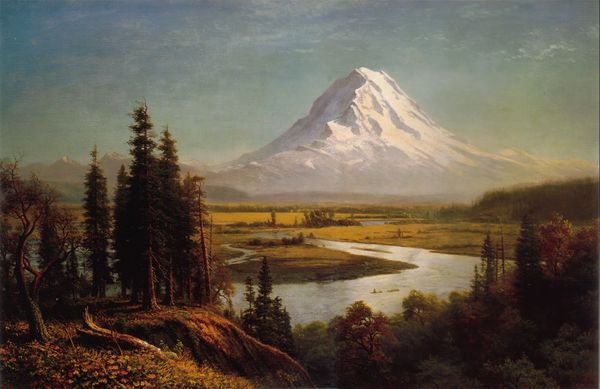
#
tree
#
middle earth
#
sky
#
animal
#
snowscape
#
atmospheric-phenomenon
#
landscape
#
waterfall
#
river
#
impressionist landscape
#
nature
#
forest
#
mountain
#
gloom
#
seascape
#
natural-landscape
#
fog
#
men
#
water
#
nature
#
murky
#
watercolor
#
mist
Dimensions: 182.9 x 304.8 cm
Copyright: Public domain
Curator: Albert Bierstadt painted this gorgeous view, titled *Mount Hood, Oregon*, in 1865. Editor: It's immediately striking how the sublime peak dominates, rendered in this almost ethereal light. There’s something about its cool, pale tonality that contrasts with the darker foreground, creating this sense of awe and distance. Curator: The piece was made during a time of intense national expansion and narratives about manifest destiny in the United States. It’s difficult to view Bierstadt’s work, including this one, separately from this ideology of westward expansion. How do you feel this social context contributes to the interpretation of the work? Editor: I see how the monumental scale and dramatic lighting emphasize the grandeur and, perhaps, the invincibility of nature itself. The semiotic composition, especially the relationship between foreground and background, does draw my attention—as if to illustrate the power and potential held within the land. Curator: The people, tiny amid all the foliage, become representatives of that ideology, perhaps even claiming ownership of this land. Look how the Indigenous inhabitants and the impact of colonialism are conveniently left out. Instead, there is focus on settlement—with a depiction that promotes white presence as natural and inevitable. Editor: Indeed, it speaks volumes that the men are placed so discreetly—almost like observers. Formally, there is an interesting use of color, guiding the eye and creating depth through contrasting values and hues, emphasizing natural order over potential chaos. Curator: It's difficult not to read a certain level of social violence into its beauty. We need to question what this carefully curated image is designed to conceal about its moment in time. What histories were deemed unworthy? Who wasn't invited to be the viewer of this landscape? Editor: Pointedly posed questions, challenging what a purely aesthetic response might leave unquestioned. Looking at the detail in the cascading waterfall juxtaposed with the mist on the mountains, the sheer beauty can’t be denied, yet neither should its place within socio-political history. Curator: Precisely. When encountering works from this period, acknowledging the complex power relations helps me decode narratives the canvas presents, consciously or otherwise. Editor: For me, exploring this piece was all about acknowledging both its artistic execution and the complexities of its representation. It highlights how inseparable visual analysis is from understanding broader historical and societal dynamics.
Comments
No comments
Be the first to comment and join the conversation on the ultimate creative platform.
